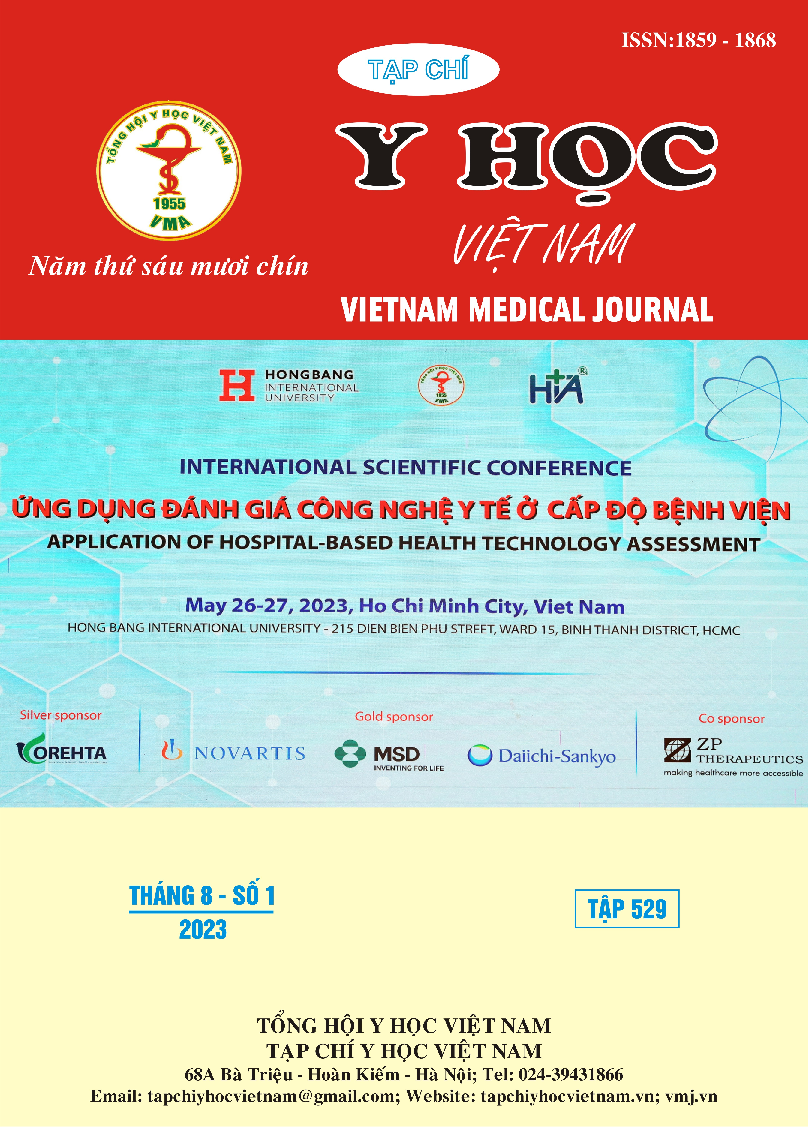THE SITUATION OF MEDICATION USE IN THE TREATMENT OF ACUTE CORONARY SYNDROME IN INPATIENTS AT CAN THO GENERAL HOSPITAL IN 2022-2023
Main Article Content
Abstract
Background: Acute coronary syndrome is the cause of death. According to the American Heart Association's 2021 statistics, an estimated 805,000 cases of acute coronary syndrome occur each year, with 605,000 new cases, and one new case occurs every 40 seconds. Objectives: To describe the characteristics of medication use, rationality of indications and dosages of drug groups: Anticoagulants, antiplatelet agents, ACEIs/ARBs, beta-blockers, and statins used in the cardiology-geriatrics department within the first 24 hours of admission to Can Tho General Hospital. Materials and methods: A cross-sectional descriptive study of 230 medical records of patients diagnosed with acute coronary syndrome on admission to the cardiology-geriatrics department (main disease) from February 15, 2022 to May 15, 2023. Results: The average age of the 230 study subjects was (67.7 ± 13.6) years. Most patients had cardiovascular risk factors: Dyslipidemia (87.4%) and hypertension (84.3%). In the first 24 hours of admission, the proportion of anticoagulants, antiplatelet agents, ACEIs/ARBs, beta-blockers, and statins prescribed was 91.7%, 98.3%, 80%, 15.2%, 88.7%, respectively. The proportion of rational indications and dosages of drug groups: Anticoagulants, antiplatelet agents, ACEIs/ARBs, beta-blockers, statins were (92.6%-83.5%), (95.2%-78.9%), (89.2%-100%), (70.8%-100%), and (88.8%-72.3%), respectively. Conclusions: The rate of compliance with acute coronary syndrome treatment guidelines in hospitalized patients in the cardiology-geriatrics department within the first 24 hours of admission is high at Can Tho General Hospital.
Article Details
Keywords
Acute coronary syndrome, guidelines, inpatient, rate of drug use.
References
2. Bộ Y tế Việt Nam (2019), Hướng dẫn chẩn đoán và xử trí hội chứng vành cấp, Quyết định số 2187/QĐ-BYT ngày 23/12/2020 của Bộ Y tế.
3. Bộ Y tế Việt Nam (2018), Dược thư Quốc gia Việt Nam, Nhà xuất bản Y học, Hà Nội.
4. Hồ Đăng Duẫn, Châu Ngọc Hoa (2017), “Tần số tim và sử dụng thuốc chẹn beta ở bệnh nhân hội chứng vành cấp”, Tạp chí Y học thành phố Hồ Chí Minh, 21(1), tr.179-184.
5. Amsterdam, E. A., Wenger, N. K., Brindis, R. G., et al. (2014), “2014 AHA/ACC guideline for the management of patients with non–ST-elevation acute coronary syndromes: a report of the American College of Cardiology/American Heart Association Task Force on Practice Guidelines” Journal of the American College of Cardiology, 64(24), pp. e139-e228.
6. Bergmark, B. A., Mathenge, N., Giugliano, R. P. et al. (2022), “Acute coronary syndromes”, The Lancet, 399(10332), pp.1347-1358.
7. Collet, J. P., Thiele, H., Barbato, E., et al. (2021), “2020 ESC Guidelines for the management of acute coronary syndromes in patients presenting without persistent ST-segment elevation: The Task Force for the management of acute coronary syndromes in patients presenting without persistent ST-segment elevation of the European Society of Cardiology (ESC)”, European heart journal, 42(14), pp.1289-1367.
8. Ibanez, B., James, S., et al. (2018), “2017 ESC Guidelines for the management of acute myocardial infarction in patients presenting with ST-segment elevation: The Task Force for the management of acute myocardial infarction in patients presenting with ST-segment elevation of the European Society of Cardiology (ESC)”, European heart journal, 39(2), pp.119-177.
9. O'gara, P. T., Kushner, F. G., Ascheim, D. et al. (2013), “2013 ACCF/AHA guideline for the management of ST-elevation myocardial infarction: a report of the American College of Cardiology Foundation/American Heart Association Task Force on Practice Guidelines”, Journal of the American college of cardiology, 61(4), pp. e78-e140.
10. Tsao, C. W., Aday, A. W., Almarzooq, Z. I., Alonso, A., Beaton, A. Z., Bittencourt, M. S., and American Heart Association Council on Epidemiology and Prevention Statistics Committee and Stroke Statistics Subcommittee. (2022), “Heart disease and stroke statistics-2022 update: a report from the American Heart Association, Circulation”, 145(8), pp. e153-e639.


